- Joined
- Jun 14, 2016
- Messages
- 263
- Reaction score
- 516
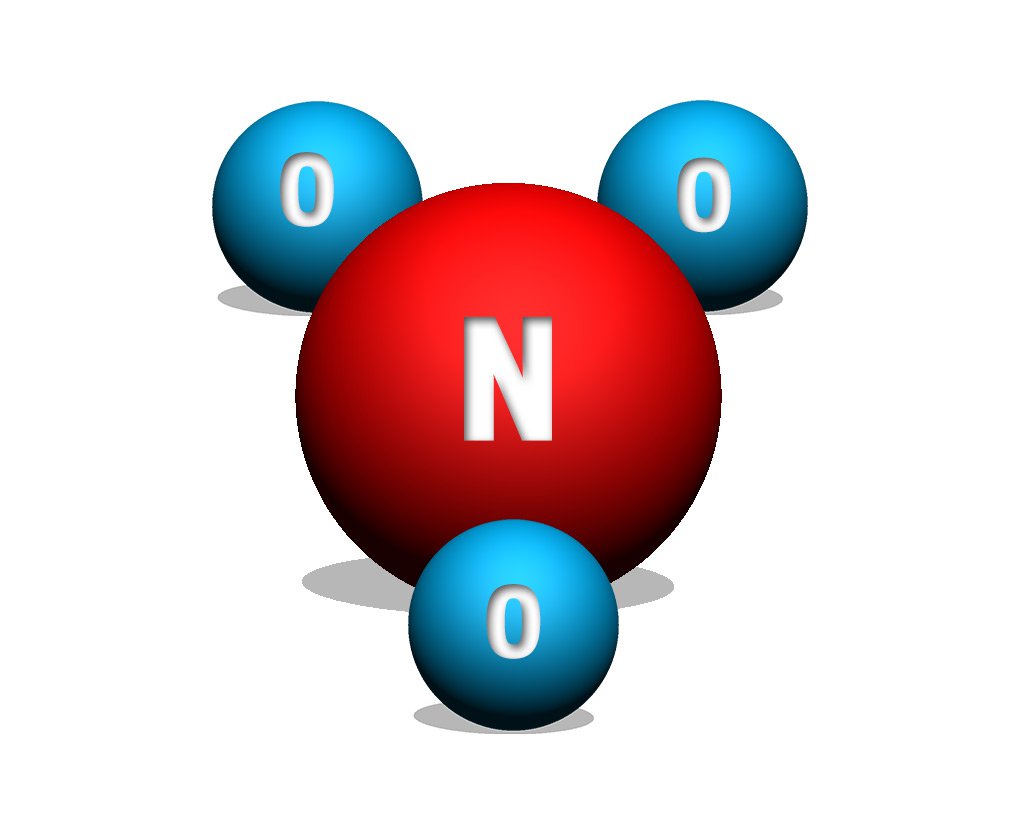
Both come with a litany of advantages and disadvantages. For example, growing macro-algae quickly enough to denitrify an aquarium often means dosing micro-nutrients into the water. These micro-nutrients are in many respects the same compounds you’re trying to remove, but are required when starting the cycle of rapid macro-algae growth. Nitrate removal via the properties of microbes often reduces ph and can lead to cyanobacteria outbreaks and unwanted hazing on the aquarium glass.
Over the years I’ve tried a host of methods to remove nitrate from reef aquariums. In the early days, we didn’t even realize what a real issue nitrate was. Wet/dry filters were common and their action produced copious amounts of nitrate as a bi-product. At one time, large refugiums and “miracle-mud” based filters were the only way to pull nitrate from reef water. Both were time consuming, expensive and messy, plus they didn’t always work as expected. Today there are more options than ever for removing nitrate. After years and years in the hobby, I’ve come to believe that utilizing microbes for nitrate removal is the most effective method. Using that as a starting point, let’s explore some options.
Soluble carbon:
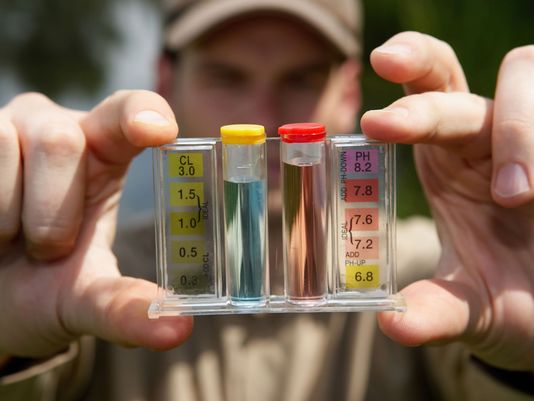
The vodka dosing craze hit the reef world several years ago. People were excited, as it seemed that a common spirit could solve a tank’s nutrient problems. However, it wasn’t vodka in and of itself that produced the results aquarists were reporting. Anaerobic bacteria utilize soluble carbon as a food source. Our tanks are loaded with aerobic bacteria, which loves oxygen and thrives in the turbulent waters of a reef tank. While these bacteria are efficient at turning ammonia into nitrite and nitrite into nitrate, that is where their effectiveness stops. The nitrate remains and can either be used as a food source by plants or assimilated under the processes of anaerobic bacteria.
Anaerobic bacteria are a bit more complicated (at least in a reef tank) than their aerobic cousins. They don’t like the current laden, oxygen rich waters of our tanks, but prefer the stagnant and still, oxygen deprived waters of a tide pool. They are relegated to cracks and crevices within live rock and filter media, that experience little flow and never receive any oxygen. Deep sand beds and live rock filled refugiums are meant to cultivate these bacteria. However, just providing them with an oxygen free habitat isn’t enough. They also need a food source. Since aerobic bacteria use ammonia as a food source, the presence of fish waste or decaying food stuff is enough to keep them going.
Anaerobic bacteria don’t necessarily de-nitrify a tank, simply in the presence of nitrate. Converting nitrate into harmless nitrogen gas is more a bi-product of a healthy, active anaerobic population. Soluble carbon feeds anaerobic bacteria, resulting in a bloom and inevitably some nitrate is assimilated. However, it often stops right there. Quickly the bloom eats through its food source or is pumped into the main tank where exposure to oxygen rich water kills it. A limited amount of nitrate may be assimilated, but often it’s not near enough to produce a lasting solution to a tank’s nitrate load, even when dosed daily. Soluble carbon is far more effective when used to seed a medium meant to grow and sustain anaerobic bacteria. In this case, the carbon produces a bacteria bloom, which then can colonize a media and continue working. In the case of bio-pellets, the pellets themselves serve as that media and provide anaerobic bacteria with a long-term food source. While effective to a degree, bio-pellet reactors come with their own host of challenges, mainly high levels of bacteria that can spur cyanobacteria outbreaks.
In the end, soluble carbon alone fails to be a complete solution for maintaining a healthy anaerobic bacteria population or assimilating a tank’s nitrate content.
Zeolite reactors:
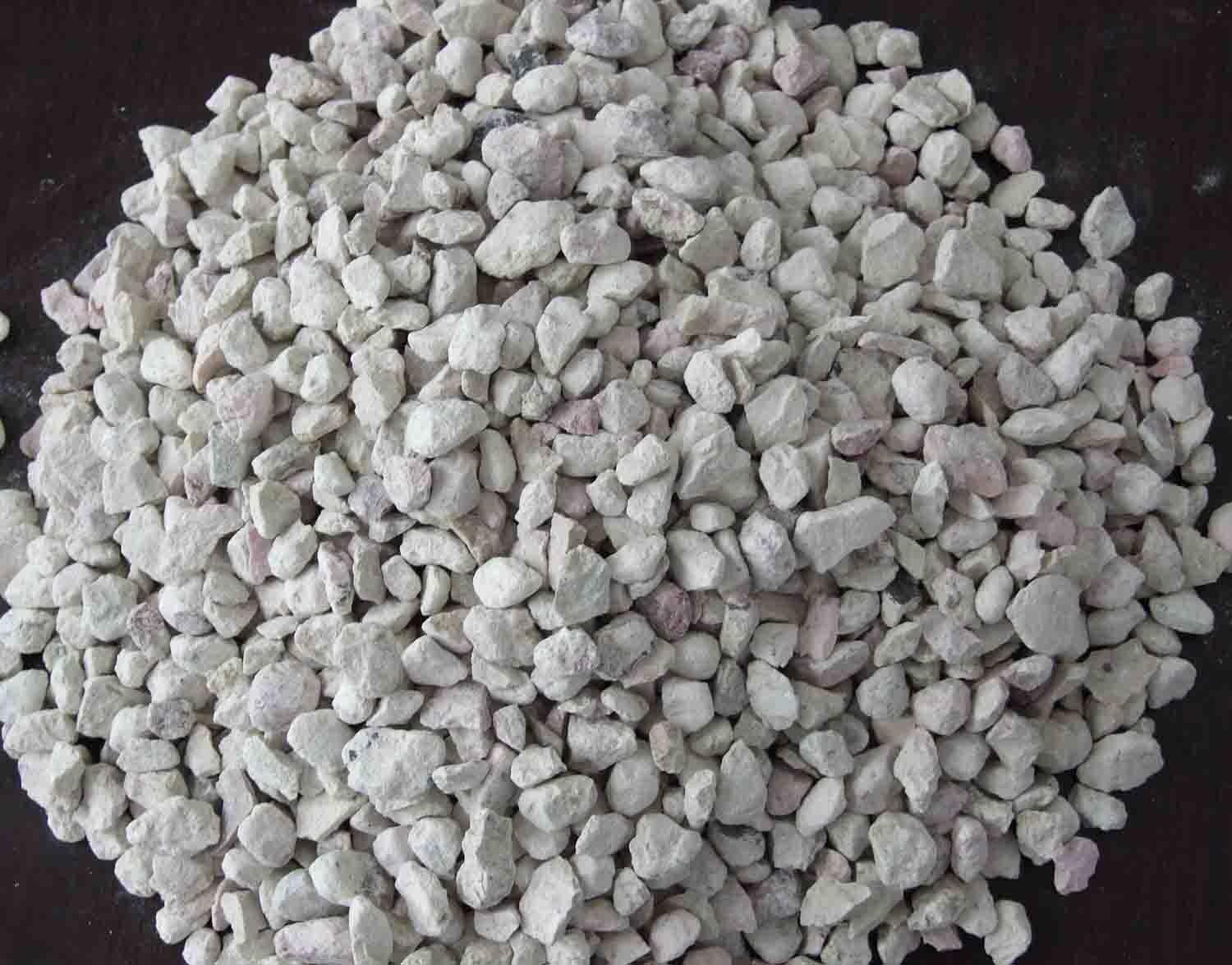
Zeolite is both naturally occurring and industrially produced. It’s a micro-porous mineral that is found in everything from cat litter to laundry detergent. Zeolite is commonly used for its innate ability to absorb odors. However, the mineral is so micro-porous that when packed together tightly in a reactor, it creates the ideal habitat for anaerobic bacteria. Zeolite also has the ability to enhance the effectiveness of various additives. In the reef aquarium world, we use zeolite to both grow and sustain anaerobic bacteria, which then assimilate nitrate as a bi-product of their natural life cycle.
Cycling a zeolite reactor takes time and both a bacterial booster along with a soluble carbon source are often used to speed up the process. Once fully cycled (and correctly maintained) the bacteria within a zeolite reactor quickly assimilate both nitrate and phosphate. While colonizing the zeolite material, the bacteria produce a slime known as mulm. This mulm builds on the stones with such intensity that if it’s not removed daily, the micro-pores throughout the mineral become clogged, preventing bacterial action. This is the reason zeolite reactors have to be stirred daily, producing a milky white cloud of mulm. Luckily, the mulm is harmless and can be utilized by most corals as a food source.
While very effective, zeolite isn’t maintenance free. To make it work effectively, aquarists must abandon the use of UV sterilizers, ozone generators and various other equipment that indiscriminately kill bacteria. If a zeolite reactor is cycled too fast, or too much water is pushed through it, the sudden depletion of nutrients can shock corals, causing rapid tissue narcosis and bleaching. It’s best to take zeolite use one step at a time and if facing a major nitrate problem, it can take several months before zeolite has the intended effect. In addition, zeolite material must be changed once every 30-45 days as eventually the micro-pores in the minerals become so clogged that even shaking won’t open them up. Since all the media is usually changed, there is sometimes a short gap of time while the bacterial filter within the reactor rebuilds itself.
It’s important to understand that zeolite use isn’t just a method of reducing NO3 and PO4. It’s a complete tank management methodology and system. Zeolite use comes with its own plethora of additives, ranging from bacterial boosters to amino acids. It’s also not cheap, as zeolite itself is expensive and the additives required even more so. Automated zeolite reactors (which I recommend) can be programmed to shake the media for you, but they too carry a high cost. If considering zeolite as the methodology behind your tank, I highly recommend the AVAST Vibe Reactor. The motor built into the reactor can be programmed to kick on twice per day, for two minutes each time, thus shaking your media and keeping the mineral’s pores open.
Bacteria based, coil style nitrate reactors:
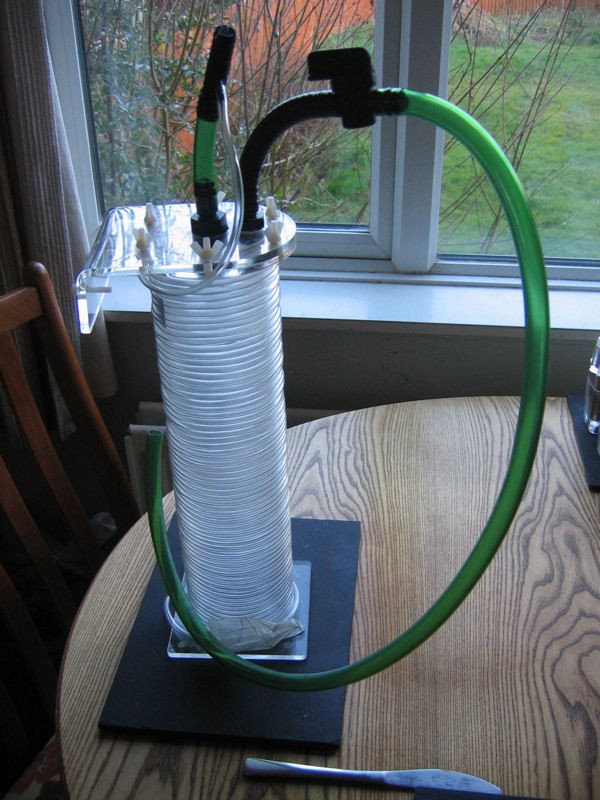
Some of you may have heard of the Aquaripure filter, still advertised online. Aquaripure’s promise is that it becomes the only filter your tank needs. While Aquaripure will remove nitrate from your tank (quite effectively I might add) it doesn’t form the sole basis of tank filtration. Like the coil based nitrate filters popular years ago, Aquaripure acts as a bacteria based nitrate reactor. A carbon food source is injected directly into the reactor and a slow water flow ensures that the anaerobic organisms within aren’t exposed to oxygen. As water passes through the filter, those organisms consume the nitrate within it, converting it to harmless gas. While this approach to de-nitrification is effective, it doesn’t come without some problems.
One, this style of nitrate reactor is prone to de-cycling. If the bacteria within the reactor die-off for any reason (a clogged pump, a sudden burst of flow, etc) then all de-nitrification stops until the colony replenishes itself. Also, it’s a smelly form of de-nitrification, capable of filling a small room with the stench of rotten eggs. To make matters worse, the bacteria themselves form thick, mucus like white globs of slime which clog intake/output lines and plug the reactor up, killing off the bacteria within. Not to mention they require constant dosing with a carbon source.
Sulfur based nitrate reactors:
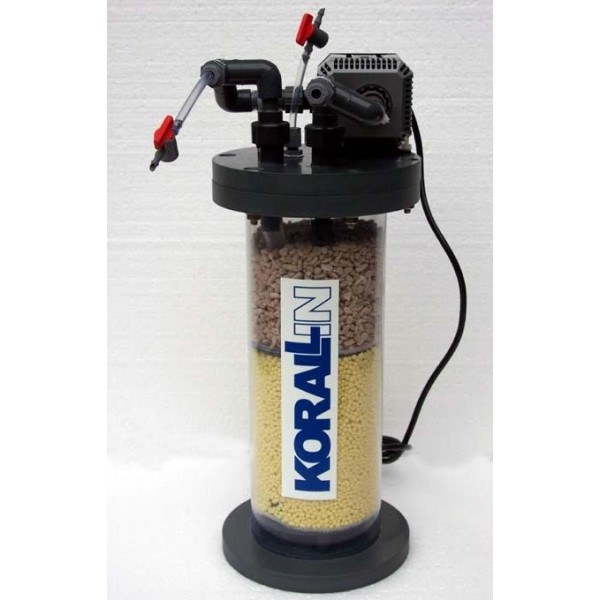
For some reason, many aquarists assume sulfur based nitrate reactors are dangerous. Perhaps it’s the fact that they’re filled with a sulfur media. The reality is that sulfur based nitrate reactors are the cheapest, easiest and fastest long-term solution to problem nitrates. They don’t require feeding, are simple to set-up and media only needs replaced once or twice per year. They utilize a process called autotrophic sulfur denitrification, which is fueled by sulfur oxidizing bacteria. In low oxygen conditions these bacteria oxidize sulfur to sulfate, while reducing nitrate to free oxygen for their own use. It sounds complex in theory but is actually quite easy to produce. It wasn’t until 1991 that this method of nitrate removal was tested in seawater within a reef aquarium. Previously it had only been used in the treatment of residential drinking water.
These reactors create a long-term chemical reaction, where nitrate is assimilated by bacteria as they oxidize sulfur. The main drawback to this approach, is that the water exiting a sulfur reactor has a greatly reduced ph. To combat this, calcium reactor media is used to replenish lost minerals, thus buffering ph before water returns to the tank. Overtime the calcium media breaks down and needs replaced, although the sulfur media lasts indefinitely. Water moves painfully slow through a sulfur reactor, as it’s necessary to maintain anoxic conditions within the reactor or the chemical reaction that assimilates nitrates will cease. Due to this, water usually leaves a sulfur reactor at a rate of 1-5 drips per second.
One thing to remember if setting up a sulfur reactor; this slow rate of flow often means that the reactors themselves are equipped with under-powered pumps, simply meant to move water through the reactor. If you attempt hooking the reactor up, using only the on-board pump, you’ll have a host of issues. The reactor is best fed via gravity siphon, where the intake is run down from the main tank and the siphon feeds the pump, which then pulls water throughout the reactor and exhausts it into the tank. Some aquarists have resorted to using low pressure aqua-lifter pumps, in cases where a gravity siphon isn’t possible.
Usually within a few weeks, a sulfur reactor is cycled and the chemical reaction is actively removing nitrate. In heavily stocked or fed tanks, it’s not unusual to have some residual nitrate, even though the reactor is producing water with immeasurable nutrients. The reactor exhausts so slowly, that it’s possible for some nitrate to build within the water and remain, without being assimilated by the reactor. In any event, even tanks with very high nitrates (excess of 25 ppm) often see dramatic drops after the installation of sulfur based nitrate reactors.
Also, sulfur reactors work equally well in the presence of UV sterilization, ozone and protein skimming, since the majority of the bacteria responsible for removing nitrates is safely housed in a reactor.
Downsides:
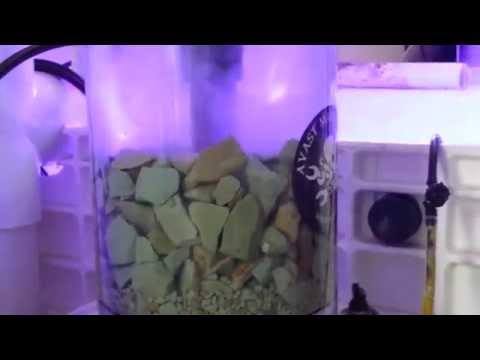
Dosing soluble carbon and using zeolite can both cause a hazy film to appear on the aquarium’s glass, especially after dosing. This film is a bacterial slime and it can be pronounced, making the aquarium water appear cloudy. Luckily, it’s easily wiped off with a magnetic algae cleaner. If attempting microbial de-nitrification, reducing the amount of soluble carbon dosed can often reduce the appearance of film while still creating enough of a bacterial bloom to cycle and maintain a reactor.
It’s also important to remember that microbial nitrate filtration is not one size fits all filtration. Often, we see filters advertised as the only filter a reef needs, simply because it removes nitrates. Mechanical filtration is vitally important to remove solid particles from the water, while also polishing water. This also takes some of the pressure off the protein skimmer, allowing it to be more effective. Carbon can still be used to polish water, remove odors and absorb unwanted compounds. While GFO isn’t recommended for use with zeolite reactors, it can be used with both carbon dosing and sulfur reactors.


















